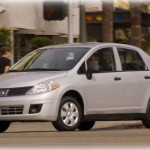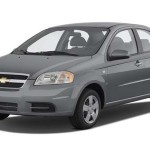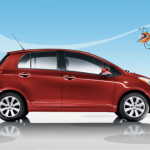Insurance Reduction for New York Drivers
New York Drivers pay some of the highest insurance rates in the country. However they are also fortunate to live in a state which is one of the very few in the nation that mandates insurance companies to reduce drivers premium. There is a caveat: a driver must complete a NY DMV approved
Defensive Driving Course. The good news you don’t have to spend six hours in a class. Courses like ours, Improv Defensive Driving Course, are available online and can be taken at your pace. Below are a few common questions about the course:
Q. After completing the Defensive Driving Course (aka as PIRP – Point and Insurance Reduction Course), how do I receive the insurance reduction?
A. Upon completion Improv’s Defensive Driving course, we will issue you certificate of completion. If you present your certificate to your insurance company or agent within 90 days after course completion, your liability and collision premium reduction will begin immediately, retroactive to the date you completed the course. If you present your certificate more than 90 days after course completion, the insurer may issue the premium discount effective from the date presented.
Q. Will the PIRP course prevent my insurance company from raising my premiums?
A. No. Insurance reduction does not prevent general premium increases, or premium increases due to violations or accidents. However It provides a 10% reduction for three years, from the base rate of your current liability, no-fault and collision premiums.
Q. What if more than one person named on a policy completes the PIRP course?
A. The insurance premium reduction applies to all motor vehicles principally operated by the motorist who completes the course. The reduction can be applied to only one driver for each covered vehicle.
Q. If I complete a DMV approved motorcycle safety/accident prevention course, does the insurance reduction benefit extend to my automobile coverage?
A. Yes. The reduction applies to the liability and collision insurance premiums for both your motorcycle and automobile.
Q. Will young operators (under 18) and drivers participating in assigned risk pool receive the insurance premium discount?
A. Yes. Any insured driver who is the principal operator and completes a Point & Insurance Reduction Program course will receive the reduction.
Q. If a youthful operator is already receiving a driver education reduction, will the PIRP discount also be applied?
A. Check with your insurance company or agent to find out if both reductions will be given at the same time
Pricey used cars test conventional wisdom
We are always trying to save you money here at our
online traffic school. The conventional wisdom that buying used cars is always the most frugal option may be tested by rising prices in the U.S. aut
o resale market.
Edmunds.com estimates the average price paid for a used, three-year old auto has risen $1,471 — or 8.5 percent — since last year, reaching $18,832.
The price you’ll pay for used SUVs like this Chevy Tahoe may have risen substantially. What’s behind the rise? Edmunds analysts believe it’s a combination of bargain-hunting consumers and the rise of certified pre-owned car sales at dealerships:
“Used cars are in great demand and relatively short supply, so their prices are remarkably high,” stated Edmunds.com Analyst Joe Spina. “Automakers understand that many traditional new car buyers are considering used cars, and in response are emphasizing their certified pre-owned car sales programs through which they can earn revenue on used car sales. This effort will keep used car prices high since CPO cars sell for a higher price than comparable noncertified used cars, raising the ceiling for the entire used car market.”
Indeed, Edmunds.com estimates the percentage of used cars sold as CPO rose from 13.8 percent to 18.5 percent.
This data is interesting, but it doesn’t look like every used car buyer is likely to encounter sharply higher used-car prices than they did last year. And when they do, I’m not sure it will be because of CPO and frugal consumers.
After all, a lot of the biggest price hikes seem to be focused in trucks and SUVs, and I’d be willing to bet that has more to do with gas prices than anything else.
After all, the resale values for trucks and SUVs, which generally get poor gas mileage fell sharply in response to the gasoline price spikes of 2008.
Due to the depressed global economy and the resulting lack of demand, gas prices have been fairly stable since then. People, as they are wont to do, have forgotten how painful those big gas bills were back in 2008, so they’re more willing to buy SUVs and trucks than they were when gas prices were high.
The other big movers were American brands, which I would wager have benefitted from improved brand perception as American car buyers have taken notice of their reliability and design upgrades.
On the other hand, if your preferred car is a Japanese sedan or station wagon, you might be in luck. The Edmunds.com value estimates have the Honda Accord and the Subaru Outback coming in at a lower than last year.
We had a lot of spirited discussion in the comment section a few months ago about whether buying a new car could be financially smart if it was close to or less than the price of a used model thanks to a generous rebate or other dealer incentive.
I think in the majority of cases, buying a low-mileage used car is probably the better decision. That said, rising used car prices and higher rates on used car loans are going to change the equation a little bit on some vehicles, and refusing to acknowledge that could leave you missing out on getting a new car for the price of a used one.
So what do you think? Is it time for the frugal to consider new cars? Why do you think used cars are getting pricier? leave your comments here on our defensive driving course blog!
Top Ten Cheapest New Cars
When you consider total cost of ownership like special financing programs, repairs, fuel efficiency, wear and tear…, purchasing a new car can make more sense than buying used. If you’re looking for practical and affordable, we got good news for you: you can still buy a good new car under $15,000. If you have a good credit and put some money down, you can be rolling in low budget style for less than the cost of breakfast and lunch out every day.
We included some choices on the list that include sedans, hatchbacks and coups. The prices are the sticker price for the cheapest version of the model, so you may be prepared to drive a stick shift and may forgo some luxuries like air conditioning.
Ranked in order of cheapest (don’t confuse with Best Value) to most expensive, the winners are:
1. 2010 Hyundai Accent Blue Coupe, $10,690.00
2. 2010 Nissan Versa 1.6 Base Sedan, $10,730.00

3. 2010 Kia Rio Base Sedan, $12,390.00

4. 2010 Chevy Aveo LS Sedan, $12,685.00

5. 2010 Chevy Aveo5 LS Hatchback, $12,835

6. 2010 Toyota Yaris 3 Door Hatchback, $13,365.00

7. 2010 Toyota Yaris 5 Door Hatchback, $13,665.00

8. 2010 Kia Soul Base, $13,995.00

10. 2010 Suzuki SX-4 Base Sedan, $14,094.00

The Suzuki SX-4 is one of the better looking cars on the list that also commands great reviews. But no air conditioning would be a deal breaker for us (considering our Defensive Driving Course Headquarters are in Los Angeles… where it hit 115F this summer).
Operating a traffic school, gives us an access to many experts and individuals with automotive expertise. A quick research has confirmed that if we were handing out the award for best value on the list, it would go the new Ford Fiesta S (which is the only 2011 model on the list). Ford packed a lot of extra goodies into the Fiesta, including power mirrors, capless gas filler, aux in / USB jacks and A/C, yet has managed to keep the price reasonable for the entry level model. Surprisingly it also offers a sportiest ride on the list. If you enjoy getting your freak on with a twisty road, this is where you should begin shopping.
Word of caution: it isn’t easy to find base models on dealer lots, since they take up as much room as loaded models, have less margin and can be hard to move. If you have to special order one, expect to pay full sticker price instead of haggling over invoice plus $500. On the other hand, sometimes a dealer can be very motivated to sell a year old entry level car, even if it’s in a higher trim level. It may take some time (and travel) to find exactly what you’re looking for, but we always thought that the hunt is half the fun.
Fighting Traffic Tickets – Is it a Good Idea?
Decide Whether the Ticket Is Worth Fighting First off, decide whether it’s worth your time to fight a ticket. If a ticket means thousands of dollars in increased insurance premiums, risk of license suspension, or other serious penalties it may be worth the hassle… however, fighting tickets is not simple it may not be always worth it. Below are some basic guidelines that can help you decide
Understand the Law You Are Alleged to Have Violated Most police officers don’t really know the letter of the law – after all that’s what attorneys are for. An easy first step in fighting traffic tickets is to read the exact law you’re alleged to have violated, and break it down into elements. Once you’ve broken the law down into its components, if you can show that your behavior didn’t meet the exact prohibitions contained in the law, then you’ve gone a good ways towards showing that you haven’t violated the law at all. Here’s an actual stop sign law, with brackets to separate different elements of the law: “[A person] [operating a human-powered vehicle] [approaching a stop sign shall slow down] and, [if required for safety, stop before entering the intersection]. After slowing to a reasonable speed or stopping, [the person shall yield the right-of-way to] [any vehicle] [in the intersection] or [approaching on another highway so closely as to constitute an immediate hazard during the time the person is moving across] or [within the intersection or junction of highways], [except that a person after slowing to a reasonable speed and yielding the right-of-way if required, may cautiously make a turn or proceed through the intersection without stopping].” Some elements you can’t really challenge (you are a person after all), but notice that stopping isn’t actually required! It’s only necessary if it is “required for safety” and the law explicitly allows you to “cautiously make a turn or proceed through the intersection without stopping”. Chances are good that the police officer wrote down something like “rolled through intersection without a complete stop”. You can easily go into court, lay out the law, and demonstrate that you never violated the law in the first place. Will a judge accept this? Absolutely. This is precisely what lawyers do, they break down laws into elements and try to prove that some element wasn’t met. Remember, you’re innocent until proven guilty.
Don’t Pay the Ticket, It’s Often an Admission of Guilt When you first get your ticket, do not pay it. In almost all jurisdictions, paying the fine is an admission of guilt. Instead, find out how you can get your day in court.
Consider Traffic School Many jurisdictions offer an option to attend
traffic school. In return, your charges will be dismissed or reduced and points masked from your driving record. Explore this option by researching the law in your state. If you find that an
online traffic school is a good option, request it from the prosecutor or judge. Most of the jurisdictions that accept traffic school (sometimes referred to as a
Defensive Driving Course) will also allow you to complete it Online. Traffic School requirements range from 4-12 hours , which is still much better than some other alternatives.
Common Defenses to a Traffic Ticket There are several typical defenses used when fighting traffic tickets. Many of the defenses below are based on your constitutional right to question the accuser .
The Officer Doesn’t Show UpThe easiest way to win is to have the police officer not show up. Because you have a constitutional right to question the accuser, if the officer doesn’t show, you will typically automatically win. How can you increase your chances of getting a no show?
- Postponing the court date can significantly increase the odds that the officer will not be present during the trial.
- Never go with the date on your ticket. That’s usually a “gang date” for the officer, where the officer has scheduled all of his or her court dates at once. If you schedule for an extension that falls on a different day, chances are they aren’t going to come in on their day off just for you.
- Try to choose a court date that is closer to the holidays or summer vacation days – this might increase the odds of your officer being out on vacation.
Camera Tickets and Hearsay People often think that there’s little they can do with a camera based ticket, but they’re amazingly easy to beat. Here are some tips:
- Courthouses will rarely go through the trouble of bringing the video or picture to court, usually resulting in an automatic dismissal of the ticket.
- Even if they do, there is no human subject to question other than the officer who viewed the tape. The second the officer opens his mouth, you just object “hearsay”. Hearsay is the equivalent of “so and so told me”, which courts consider unreliable evidence. After all, the officer didn’t actually see you do anything, rather the officer is relying on the observations of someone/something else. As a result, the officer can’t testify as to what you did wrong and obviously neither can the camera. It takes courage to do this, but it can work.
Trial by Declaration In many states, you are entitled to a trial by mail. You submit your claim as to why you are innocent in a letter, and the officer must do the same. While officers will often show up for court because it is an overtime opportunity, trial by mail is pure paperwork, and they will often not bother to submit their side of the story. When this happens, you win by default. Should you lose by mail, you have lost nothing: you can still request an in-person trial, request traffic school, or pay your fine. The Sixth Amendment Requires a Speedy and Public Trial The sixth amendment guarantees you a speedy and public trial, and this can be an easy basis to avoid a ticket. For example, in California, a speedy trial is defined as 45 days from the time of the infraction. In many jurisdictions you must go to the courthouse in person to get a court date. Among those legal documents you are asked to sign, will be one in which you waive your right to a speedy trial. Do not sign this document. You cannot be legally forced to waive this right. What this means is that if the court system cannot fit you in, within those 45 days, (times for your state may vary) then your case must be dismissed. Tickets Based on Radar Guns Most radar guns need to be recalibrated every 30-60 days, and due to ignorance, lack of funding, or laziness, they rarely are. One solid argument for your case is to prove that the measurement device is faulty. In some states the officer must check the calibration after issuing the ticket – usually by using two tuning forks held in front of the radar, which vibrate at the frequencies for 35 mph and 55 mph. Verify whether this was done and documented. Check Your Ticket for Errors While courts will often excuse minor errors on a ticket ? a misspelled name or whether your car color is maroon or dark red ? if the officer cites the wrong law on the ticket, or grossly misidentifies the highway or your make of car, you may to get your ticket dismissed. Defenses That Don’t Work The following is a short list of common defenses people often make when fighting traffic tickets that just don’t work:
- You claim ignorance of the law. It doesn’t matter how honestly you misunderstood what was required, it won’t work.
- You argue that no one was hurt. The no-harm-no-foul rule doesn’t apply in court. The only exception is whether safety is part of the law itself, and you can argue that obviously you operated your vehicle safely because no one was hurt.
- You complain that the officer selected you alone out of a dozen other potential violators. Admitting that you were in fact guilty, but that there were other guilty people present doesn’t help you. You can win a “selective enforcement” defense, but it’s very hard to do and requires that you demonstrate the officer had a specific and improper motive to pick on you. For instance if you filed a report against the officer and he just happened to pull you over the next day with a dozen other violators nearby, you may win.
- You give the judge a sad story. It doesn’t work, judges hear this all day long and may doubt your honesty. At best this will slightly reduce your fine.
- You claim the officer is lying. Between you and the police officer, the judge is more likely to believe the officer. Unless you have specific proof, it won’t work.
Cell Phone Use While Driving: New Level of Fail
Ian Charles Mason, age 34 from Jamul California did not pay any attention to law enforcement officers who constantly advised him against distracted driving. As a worker from an
comedy traffic school, I warn everyone to refrain from using his cell phone while on the road. Due to the unheeded advice, Mason lost his stash of $121,860 and 55 pound bag of marijuana and was immediately sent to jail.
Fate was not on the good side of Mason on the 21st of September, when an officer observed Mason blatantly violating the California Vehicle Code rule by talking on his cell phone while driving. He was pulled over by Officer Campbell who noticed that Mason seemed to display signs of intoxication and subsequently arrested him for driving under the influence.
The vehicle was searched and it turned out that there were six plastic bags stored inside the trunk. These large bags contained 55 pounds of marijuana, each packed in a smaller one pound bag. The Humboldt County Drug Task Force was at once notified and they quickly responded. Officers also found Masons’ cash stash hidden below the rear seat of his vehicle. His cash and 55 pounds of marijuana were seized as asset forfeiture.
Everyone knows it’s illegal to carry marijuana for the intent of sale (without the proper medical licenses) but it’s another thing to get caught for it because of talking on your cell phone and driving. This is exactly what happened to Ian Charles Mason; he soon found himself sitting in the Humboldt County Jail. So, for those driving on roadways, refrain from using your cell phones while behind the wheel. I will try and drive that point home again and again here on our Defensive Driving Course website because especially in California drivers just do not seem to get the point.
Worried About Rising Gas Prices? Be Prepared!
Unleaded regular’s hovering around $3 per gallon – which is high, but manageable. What if it goes back up to over $3 per gallon – or even $4 per gallon? Here are a few things to think about in the way of hedging your bets and insulating yourself and your family from the economic shocks that could very well be just around the corner:
Evaluate your fleet:
If you currently drive a gas-hungry vehicle, the time to consider replacing it with a more efficient one is before gas-hungry vehicles become virtually worthless overnight – as would happen if gas prices head south of $4 per gallon.
People who are driving 17 mpg SUVs and pick-ups when gas prices suddenly spike will be left holding the keys to vehicles almost no one else wants, either.
Meanwhile, it’ll be a seller’s market for fuel-efficient cars. Those who don’t have one will have to pay top dollar to get one.
Act pre-emotively and you’ll come out on top. Fail to act and you’ll be stuck with a vehicle that may cost $100 to fill-up that isn’t worth a third of what you paid for it.
If you absolutely must have a truck because of the work that you do or the area where you live, consider buying a diesel-powered pick-up to replace your gas-burning one. It’s true diesels cost more to buy – and the fuel is often more expensive than gas. But at $4 or $5 per gallon, the economics of owning a diesel truck that gets 30 mpg vs. a gas truck that’s in the teens back flips in your favor. Plus, a diesel-powered vehicle can last two or three times as long as an otherwise similar gas-powered vehicle. If you only have to buy a new vehicle once every ten or 12 years vs. once every eight or so, that’ll save you some bucks, too.
Pare down your fleet:
Some families have more vehicles than people. That’s fine, provided you can easily afford all those vehicles – and not just the cost to feed them fuel. People often forget all the peripheral costs of ownership, like insurance, taxes and, of course, necessary maintenance. If you keep multiple vehicles, the total costs can end up being quite high – even if you’re not actually driving the cars much.
If you can get by with two cars instead of three – or one car instead of two – the savings now can be considerable. And they’ll be even more so in a world of $4 gasoline.
Another savvy move is to cash out the equity you may have in excess vehicles. By selling off a surplus car or two, you can sock away several thousand dollars – which could come in very handy on the day that fuel prices rocket to a buck (or three) more per gallon than they are right now.
Investing in a low-bucks used economy car is another smart move. The glitter surrounding a new electric car or hybrid may be dazzling – but it’ll take many years to work off the cost ($41k for a new Chevy Volt) of buying one, even at $4 or $5 per gallon. A $4,000 used Corolla that gets 35 miles per gallon could ease the pinch of $50 fill-ups considerably.
Evaluate your job/where you work:
Many of us spend two hours (or more) every workday getting from home to our jobs and back home again. We bought into this because of the math. The lower cost of living in the ‘burbs offset the cost of fuel spent commuting, etc… Well, it used to.
But the equation changes when gas prices double or triple. All of a sudden, instead of spending $40 per week for fuel, you might be spending $80. For many families, the additional unexpected expense might be the straw that breaks the camel’s back. And there’s a double-whammy involved. Once gas prices sail past $4 per gallon, those far-flung suburban homes become less and less desirable – and their value falls.
This is already happening. But if we get to $4 or $5 fuel, the downturn in the housing market could become a collapse. Few people can afford a big mortgage – and $400 per month for gas on top of it.
So if you’re already close to the edge, money-wise, and know that a significant increase in your commuting costs could put extreme stress on your budget – begin thinking about options before a theoretical risk becomes an immediate crisis. Ask about telecommuting (if possible). Discuss ride-sharing with co-workers and friends. Maybe even consider moving closer to where you work. Once we get to $4 or $5 gas, your options will not be nearly as good as they are now.
Save elsewhere:
None of us can control the cost of fuel; if the sign says $4 per gallon and we need to fill up, that’s what we’ll pay. However, we do have control over other expenses. And we can compensate for increased energy costs by reducing what we spend on other things.
Many of us, for example, could easily get by without things like video cell phones and PDAs. Sure, electronic gadgets are fun – and handy. But the question should be: Are they necessary? And if the answer is “no” then the next question ought to be: Do I prefer having some money in the bank to cushion against possible upticks in energy costs (which can’t be evaded) or am I willing to risk being strapped for money if that happens in order to have the gadgets I want but don’t really need?
One last thing. Did you know that in most cases you can save money on your car insurance if you take an online traffic school class or defensive driving course? It works perfect for people with bad driving records and there are even comedy traffic schools online to make taking a class even easier. The more money you have in the bank – and the lower your monthly expenses for other things – the less $4 or even $5 per gallon fuel can hurt you.
How To Avoid A Speed Trap
It may seem like every day is a battle while driving on the road. You race across town to get to places on time .. avoiding cars that are driving too slow or too fast. In most cases you may fall into the latter category since you’re always trying to make it to your destination on time. And then BAM a speed trap…
Most of you may have experienced being in a speed trap and it sucks getting that hefty traffic ticket which usually derives you NO mercy especially if you’re going fast on residential roads.
Although we are in no way encouraging you to beat the system and go fast through town here are some tips on how to minimize getting caught in “THE SPEED TRAP.”
Note: We do not condone speeding.
1. Don’t speed. But if you are then look out for typical speed trap spots like heading down hills, rounding curves.
2. Utilize services online that will help you on the road. Folks are getting hip to speed traps around their town and are using the world wide web to help their fellow drivers:
The Speed Trap Exchange website [http://speedtrap.org/] helps you find speed traps along your route; before embarking on a trip do a little research and take the list with you.
Another tool to avoid speed traps and apparently favorite amongst soccer moms can be found at Trapster.com. This application can be downloaded to your cell phone and will send you real-time alerts about locations of a speed trap. What’s even better is that it is hands free so it also avoids you getting a ticket for holding your cell phone to check. Visit Trapster.com for all the info.
3. Buy a Radar detector. Note to Truck Drivers: By federal law, radar detectors are illegal in commercial vehicles (such as trucks) in all states. Radar “jammers” are also illegal in all states.
4. Seems that the best tool on the road is to have knowledge of the road you’re traveling so educate yourself on the maximum speed limits in all the states you’ll be visiting as speed laws vary from state to state. Visit: http://www.nhtsa.gov/people/injury/enforce/speedlaws501/introduction.htm
So enjoy the road with these little tips on avoiding speed traps but most of all drive safely … not too fast. Also, if you happen to need it online traffic school or defensive driving course could be the best way to fix your driving record.
DMV “Points” For Non-Moving Violations?
Many drivers are unaware that state DMVs now assign “points” for more than just moving violations.
In Virginia and Maryland, for example one can get points – as well as a beefy fine – for violating carpool restrictions, or driving unbuckled.
The logic behind the points system up to now has been that it provides an objective means of ranking drivers according to their propensity to drive safely – or not. Various moving violations that enhance the risk of an accident – for example, running a red light – cause a certain number of demerit points to be assigned to that driver’s record. Accumulate too many points within a given period of time – the limit is usually 12-15 or so within a calendar year – and the DMV can suspend or revoke the offender’s license.
Insurance companies use the number of points on a driver’s DMV record to adjust insurance rates up or down. The more points, the more you pay. Drivers with 12 points or more are often stuck in the so-called “SR-22? high-risk group that typically has to pay $2,000 or more annually for coverage.
Arguably, the points system has many flaws – the most glaring one being the assignment of demerit points for simple “speeding,” which often means you’re guilty of nothing more serious than running afoul of a speed trap, which may be no reflection on your competence or safety behind the wheel.
But at least up to now the general rule has been that the offense must involve a moving violation that could put others at risk.
Handing out points just because you haven’t got the mandatory number of bodies in your vehicle (HOV violation) turns that concept on its head. The person may be a scofflaw deserving of a fine. But his offense has got absolutely nothing to do with the quality of his driving. A multiple carpool lane violator could rack up a pile of points on his record – which to any insurance agent or DMV clerk would look much the same as the record of a habitual red light runner or DWI offender.
Is that reasonable – or ridiculous?
Seat belt laws are a similar case in point. It’s no longer sufficient merely to issue fines to those who refuse (for whatever reason) to buckle up. Most state governments have passed legislation that imposes demerit points in addition to the fines, simply for failing to wear a seatbelt.
There have even been calls to issue tickets to passengers who aren’t buckled.
But driving while unbuckled is no more a threat to others than is baring too much skin – or wearing tacky clothes. Maybe it’s not the best idea, but does it rise to the level of a moving violation?
What it ultimately comes down to is whether we want a government – or a Salvation Army cajoling us to adopt certain “good for us” behaviors. The old-school outlook on government is that government’s job is to protect citizens from other citizens – not from ourselves. But more and more, the government is stepping in to cajole us to adopt certain behaviors and actions it thinks we should, even though these actions (whether it’s not wearing a seatbelt or smoking cigarettes) don’t directly affect anyone else.
On a purely practical level, too, the use of big sticks such as the DMV points system to hencpeck and pester people over matters peripheral to their driving muddies the waters as effectively as a Mississippi paddle-wheeler. If “offenses” such as not having the proper number of warm bodies in one’s car are thrown in with genuinely dangerous actions such as red light-running and reckless driving, the DMV points system becomes less and less a barometer of safe driving and more and more an instrument of social coercion.
Maybe that’s what it’s all about, in the final analysis. There’s big money at stake – because with a greater variety of offenses on the books that can result in “bad driving records,” our friends in the insurance industry have an easier time jacking up our rates. And with more pretexts for harassment by the state, our friends in government will have more tools available to extract money from our hides via traffic tickets and court costs.
That seems to be the the lay of the land.
What do you think? At least a defensive driving course is still cheap enough to help those with too many points.







 Live Chat
Live Chat



